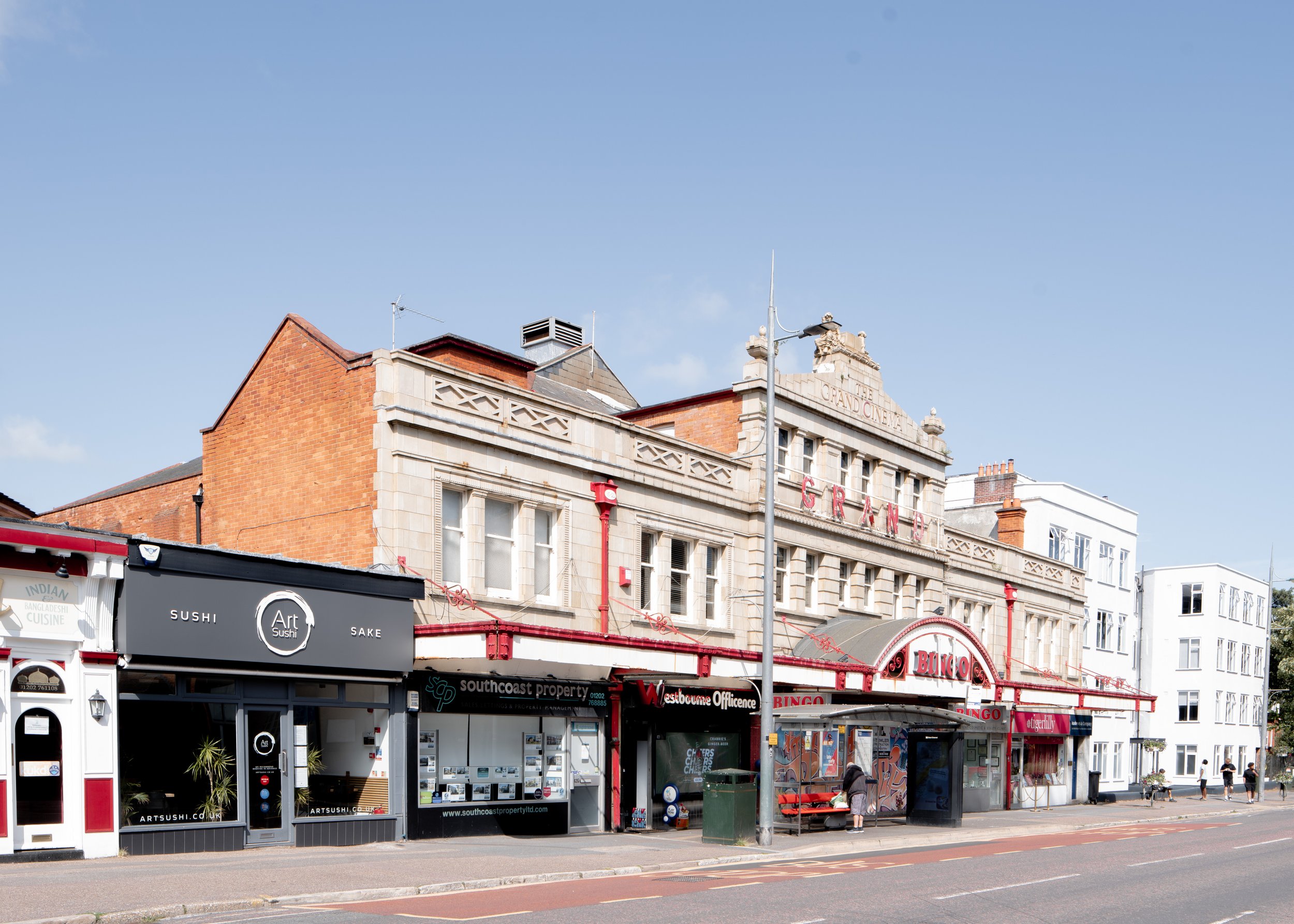
Once a beacon of cinematic grandeur, the Grand Cinema in Westbourne stands as a quiet relic of a time when architecture was as much about spectacle as function. Its Neo-classical façade, adorned with Carter & Co’s architectural tiles (Manufacturered locally), still holds traces of its former elegance—though time has softened its edges.
Beneath its presence, a parade of local businesses continues the rhythm of daily life, offering a contrast between past ambition and present utility. The building itself, though dormant, remains an architectural anchor a reminder that even in decline, architecture shapes the identity of a place.
Could it be reimagined? A cultural hub? A creative space? A home for new enterprise? the presence is there—the history, the craftsmanship, the sense of permanence. What it needs is vision.
Architect: Harry E Hawker (1922)

